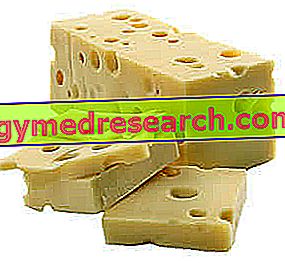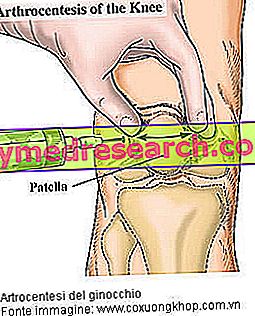What is Emmental
Emmental (also called emmenthal or emmentaler ) is a hard Swiss cheese made from cow's milk and characterized by the presence of large and numerous holes in it (more or less regular depending on the type of processing).

The emmental takes its name from its area of origin (Emmental valley, in the canton of Bern - central Alps); the Swiss one is marketed in three different types: sweet, seasoned and mature.
Emmental is produced by processing cow's milk similar to that used for other cooked or semi-cooked alpine cheeses, with the difference that it is also exposed to propionic fermentation responsible for the formation of translucent holes (the famous holes), which in the commercial Emmental they have a diameter of about 3-5cm.
Despite being a typical Swiss cheese, Emmental is currently produced and distributed worldwide with the common name of Swiss cheeese; curiously, the largest producer of Emmental is Finland, which uses a mechanized and simplified process; obviously, the cheese with the best organoleptic and taste characteristics remains the Swiss Emmental (which instead uses a traditional process).
Types of Emmental
Emmental can be found mainly in 4 types, produced in different areas:
- Swiss Emmental: hard, elastic, bitter paste with marked holes. The seasoning ranges from 8 to 10 months. The shapes are cylindrical and of considerable size (80-100kg). The crust is paraffined at the end of processing. A qualitatively superior type is the Emmental d'alpage, distinguishable by its black crust.
- French Emmental: it is smaller in size than the Swiss one and is mainly known for three sub-types, respectively: de Savoie (IGP), est-central (IGP) and gran cru .
- Bavarian or Emmental Emmental : it is produced in Germany; it is similar to the previous ones but has a highly industrialized and qualitatively less valuable manufacturing process.
- Finnish Emmental: it is mainly intended for export and is very similar to the Bavarian one.
Hygienic aspects, conservation and gastronomy
From a hygienic point of view, the good aging of the emmental makes it a microbiologically safe product; its maturation process determines the hardening of the pasta with a reduction in the quantity of water and a parallel concentration of proteins, fats, mineral salts and vitamins. The conservation of the emmental is not complicated; it is optimal for refrigeration at temperatures of around 10 ° C BUT it is however necessary that the package is well sealed (if exposed to air, the cheese quickly exits and tends to cover itself with mold). It is always preferable to consume Emmental within 7 days of opening the package.
| ? Emmenthal nutritional composition - Reference values of INRAN Food Composition Tables | ||||||||||||||||||||||||||||||||||||||||||||||||||||||||||||||||||||||||
 | ||||||||||||||||||||||||||||||||||||||||||||||||||||||||||||||||||||||||
Nutritional values (per 100 g of edible portion)
| ||||||||||||||||||||||||||||||||||||||||||||||||||||||||||||||||||||||||
In the kitchen, Emmental lends itself to the preparation of fondue and to the formulation of sauces and seasonings based on mixed cheeses; used fresh, enriches salads, appetizers and cold first courses. The optimal food-wine combination for Emmental includes the use of aromatic white, rosé or sober red wines. Like many other cheeses, also emmental lends itself to the combination with honey, jams and compotes.
Nutritional characteristics
Emmental is a derivative of highly energetic milk, rich in saturated fats and high biological value proteins; even the cholesterol intake should not be among the lowest. Therefore, the lipid profile of the emmental does NOT place it among the foods recommended in case of hypercholesterolemia. Moreover, given the considerable caloric intake, it is not suggested to use it frequently, ESPECIALLY in the case of being overweight.
NB . The reference values for saturated fatty acids and cholesterol are NOT shown in the table but their abundance is conceivable taking into consideration both the raw material used for processing and the coefficient of profitability of the cheese itself (about twelve liters of milk per kilogram of emmental ).
From a saline point of view, Emmental provides an excellent amount of calcium (essential in the growth phase and in the prevention of osteoporosis) and phosphorus (which must be applied to a lesser extent than the previous one); the added salt concentrations are also high. NB . Sodium is not recommended for high blood pressure.
As far as vitamins are concerned, Emmental contains a good quantity of group B molecules, among which riboflavin (vit. B2) stands out; moreover, making use of a propionic fermentation, this cheese should boast a certain quantity of cobalamin (vit. B12), even if the researches carried out in this regard have not confirmed this hypothesis. Good levels of vitamin A.
Bibliography:
- Cheese Atlas - G. Ottogalli - Hoepli - pag. 303: 306



